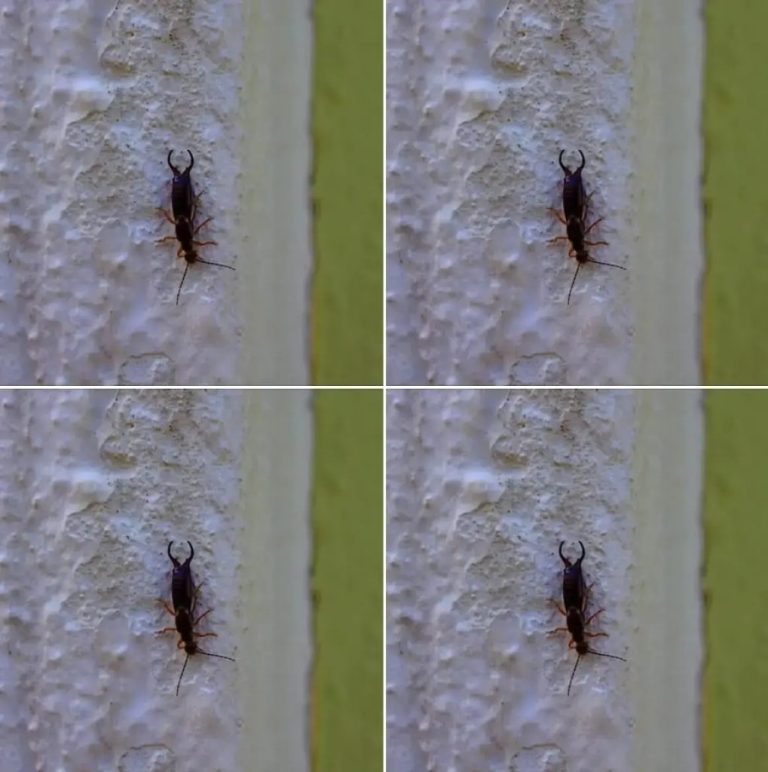Nocturnal, the earwig also feeds on aphids and fruits, making it another ally of gardeners. Although its appearance can scare children, its pincers are only used to defend itself against its predators or to capture its prey.
The gendarme, this colorful soldier
The gendarme, also known as “soldier” or “Swiss”, is a very common insect, easily recognizable by its red shell decorated with black patterns. These nicknames allude to the uniform of the gendarmes and Swiss guards, who once wore red outfits in the royal army. Children often call it “man’s head”, because of the black face-shaped pattern that adorns its back.
During the winter, the gendarmes gather under tree bark or dead leaves to protect themselves from the cold. Their diet consists mainly of the sap of lime seeds and decomposing insects. When spring arrives, they take advantage of sunny days to warm themselves, hence their other nickname: “cherche-midi”.
The cicada, queen of summer symphonies
The cicada is an emblematic insect of warm regions, particularly the south of France. Popularized by Jean de La Fontaine’s fable The Cicada and the Ant, it is known for its shrill song that resonates during hot summer days. However, La Fontaine was somewhat mistaken about the cicada’s eating habits. Contrary to what one might think, it does not feed on insects, but sucks the sap from trees using its rostrum, a sort of stinger.
Only the male sings, or rather “cymbalizes”, to attract a female. This song, produced by the deformation of a membrane located under the abdomen, is only heard in broad daylight and in sunny weather. When autumn arrives, the cicada dies, making the famous scene in the fable where it finds itself begging the ant for food during the winter unlikely.
Nicknames for the cockchafer
Finally, it would be a shame not to mention the cockchafer, this clumsy-looking reddish-brown beetle, known for its heavy and disorderly flight. It has many nicknames depending on the French region. In Lorraine, it is called “carambole”, in Nord-Pas-de-Calais, it is known as “hourlon”, while in Cantal, it is nicknamed “bête de chêne” and “pinvole” in Normandy.
Thus, these insects that populate our gardens and our countryside are an integral part of our natural and cultural heritage. Each, in its own way, plays an important role in the balance of our ecosystem and deserves to be observed and respected.
